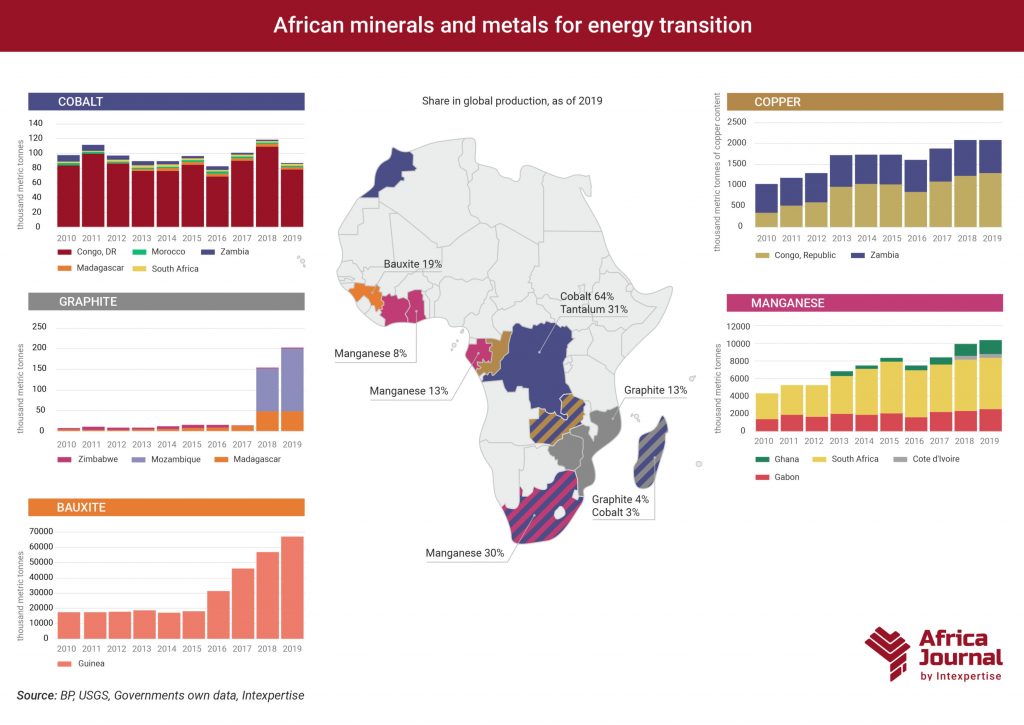The strategic shifts in global energy markets are visible: on the one hand, net energy importers are forced to diversify sources of fossil fuels in order to maintain the stability of supplies; on the other hand, they are moving at an accelerated pace towards the energy transition, which in its own turn requires sustainable supply of raw materials. RA Journal looks at Africa’s role in this process.
In the global energy transition Africa is often considered as the source of raw materials. According to World Bank estimates, in the post-Carbon era, the mineral resources of the Republic of Guinea (bauxite, iron), Gabon (manganese), DRC (cobalt, copper), Madagascar and Mozambique (graphite) will acquire strategic importance.
African countries are leading in the extraction of a wide range of metals and minerals for the energy industries and in its so-called renewable part. According to USGS Mineral Survey, Africa accounts for 72% of the world’s cobalt production (DRC, Madagascar, Morocco, South Africa, Zambia), 53% of manganese production (South Africa, Gabon, Ghana, Côte d’Ivoire), 19% of bauxite production (Guinea), 18% graphite (Mozambique, Madagascar, Zimbabwe) and 10% copper (Republic of the Congo, Zambia). Projects for the production of “green” hydrogen on the basis of hydroelectric power plants in Central Africa are being worked out, while significant reserves of natural gas (7% of the world’s) can be sourced for production of “blue” hydrogen.

Congolese cobalt is one of the main components for the production of batteries. Wood Mac predicts that if the accelerated energy transition scenario is implemented (the share of electric vehicles by 2030 is 40%, warming is +2.5 degrees), the demand for cobalt may double by 2025. And by 2030, in order to cover the demand of battery manufacturers for cobalt, it will be necessary to put into operation 8 mining complexes, equivalent in terms of production volume to the Katanga mine (25 thousand tons of cobalt per annum x8) in the Democratic Republic of the Congo. In addition, demand for other components for the production of batteries will also grow: nickel (Botswana, Zimbabwe, South Africa) and lithium (DRC, Zimbabwe, Mali).
”The economic feasibility of the production of batteries is still guaranteed by the low cost of raw materials extraction (mostly in Africa) – low export duties, the virtual absence of environmental supervision, low costs of environmental and social responsibility,” — says Andrey Maslov, director of the HSE Center for African Studies. ”The position of the African governments themselves can make serious adjustments to the general prospects of energy transition. So far, it is assumed by the promoters of the energy transition that African countries should create the most favorable conditions for producers of the raw materials required, so that their costs do not grow due to taxes, expenses for the protection and restoration of the environment, and the development of local communities and territories,” — he adds.
Author: Vsevolod Sviridov
